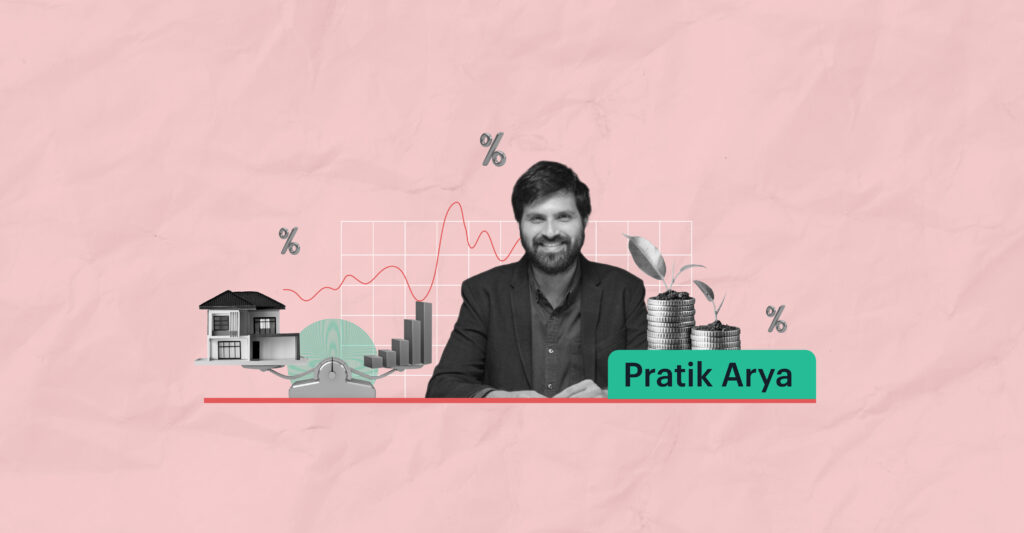Last Updated on Aug 25, 2022 by
This article is authored by Pratik Arya who spearheads Finbridge and Finplus programs. He is an avid reader and has a keen interest in ensuring education is as practical as it can be. Pratik has a formidable experience in financial services blended with a rare perspective of an education entrepreneur.
NEVER sell your house to buy equities. It’s just a metaphor to explain when you should get aggressive with putting more money into equities.
Rakesh Jhunjhunwala has often been sighted saying 2003-2007 was one of the most golden and ferocious bull markets in India. This led us to think about what was so unique at the start of 2002-2003 that such a crazy bull run happened.
Before we go deep, let’s understand two concepts: steady-state price and growth price.
The above two words are very important as they hold a very strong connection between the start of every Major bull market in India, be it 1997-2000, 2002-2007, 2009-2011 and 2014 – March 2018.
In the context of NIFTY steady state price, the value nifty should get if current EPS (Earnings Per Share) is only able to grow at 3% – that’s the world’s GDP growth rate (also called as perpetual growth rate). In simple words, this is one of the worst expectations, in terms of growth, to have from a developing country like India.
Steady State Price = TTM NIFTY EPS * (1+perpetual growth rate) / (Discount rate – perpetual growth rate)
Growth price is the additional value NIFTY should get due to future growth in EPS being more than the perpetual rate. As EPS of NIFTY has reported a 25-yr median growth in EPS of 7%- and a 25-yr CAGR/Average growth of 10% at every point of time, there is some contribution of growth price in the current price.
Current Price = Steady State Price + Growth Price; if we adjust the equation.
Growth Price = Current Price – Steady State Price
Steady Price Contribution = Steady State Price / Current Price
Growth Price Contribution = Growth Price / Current Price
The most important rule now: The higher the contribution of growth price in the current price, the more bullish the market is about future prospects, which means you should be more cautious. In other words, as the contribution of growth price increases, the market goes from the undervaluation zone to the overvaluation zone.
Now let’s see the data points for the past 25 yrs to understand the pattern:
In the image above (see green marked rows), observe the contribution of growth price in 2003 a -8%, which means at that point of time rather than paying something for the future market was not even trading NIFTY at its steady state price. A rarity which has not occurred since 1997 even once (cyclical recovery was the cause behind this number). That means if in 2003 you were sure that NIFTY EPS would at least grow by more than 3%, you were getting entire growth for FREE! A pure Value Investors paradise!!!
Not as extreme as 2003, but if you closely observe the levels where markets bottom before the start of a new rally (all the green marked years) is when the contribution of growth price goes below or reaches approx 30-35%. This is when you can be aggressive with your buying into equities. We also have this data crunched on a monthly number for finer analysis. The file is too large; hence we decided to present it on a yearly basis.
- Science and Investing – Are There Any Similarities? - Nov 17, 2022
- Does Business Cycle Affect Valuations? - Nov 1, 2022
- Why Growth Stocks Are Falling Maximum in a Rising Rate Environment? - Oct 13, 2022





